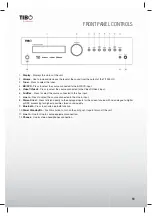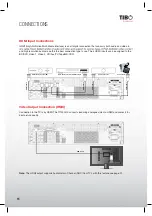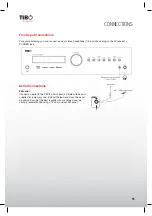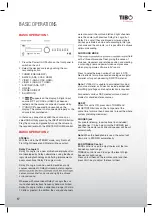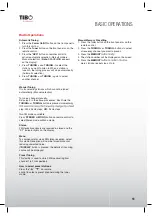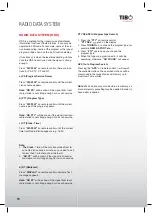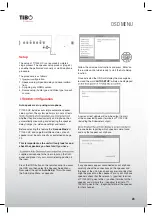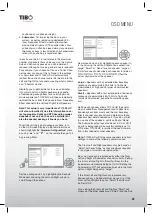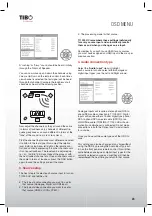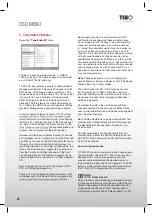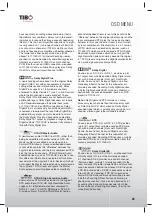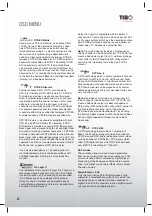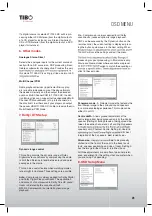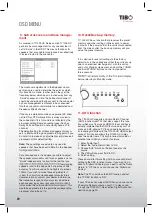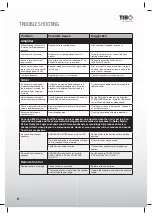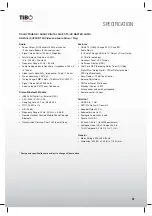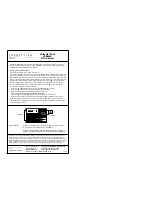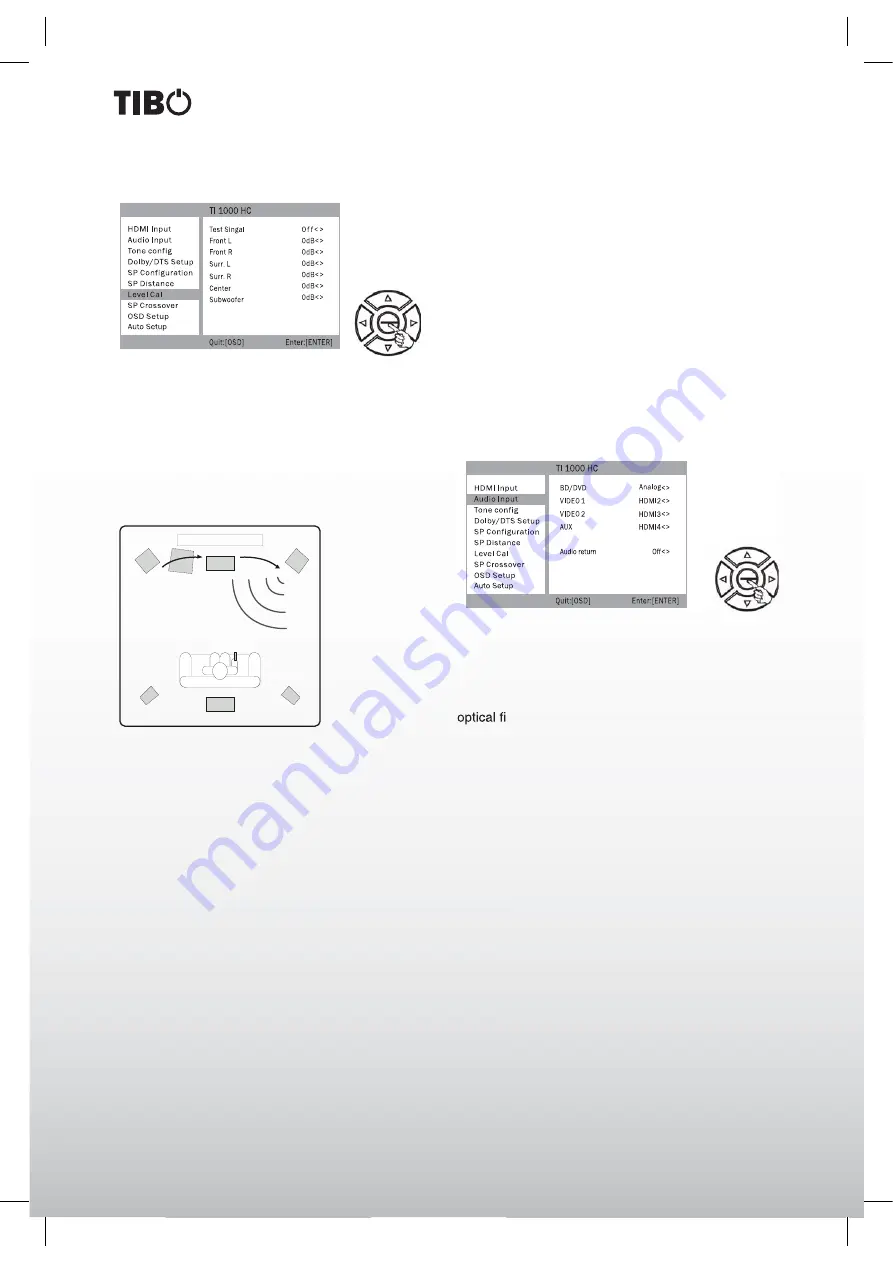
24
Turn it back on
OSD MENU
A “rushing” or “hissy” sound should be heard, initially
through the Front Left Speaker.
You can now move up and down the channels using
Volume Up/Down on the remote control. Each time a
new channel is selected the test signal will be heard
through that channel. Compare the loudness of all
channels as heard at the listening position.
Now adjust the channels so they all sound the same
(in terms of loudness only, channels of different fre-
quency responses can sound different in terms of the
“tone” of the sound i.e. more or less hissy).
Pick the channel that sounds most different and select
it to listen to the test signal. Now adjust the relative
level in dB (using Arrow left/right on the remote con-
trol) and continue comparing it to other channels until
it is of equal loudness. The level can be adjusted up
to + or - 10dB in 1dB steps. Repeat the process with
the next loudest channel etc. Once all channels sound
the same in terms of loudness, press the OSD button
again to save the settings and exit the menu.
3. Source setup
The next step is to select each source input in turn on
TI 1000 HC and tell the unit:
t
The type of audio connection you want to use for
that source (Analogue, Digital or HDMI input).
t
The type of video connection you want to use for
that source (HDMI or CVBs, YPbPr ).
t
The processing mode for that source.
TI 1000 HC remembers these settings individually
for every source input and automatically recalls
them as and when you change source input.
Remember if you wish to use HDMI for any sources
you must have assigned an HDMI input to them as per
previous section.
4. Audio connection type
Select the
“Audio Input”
menu. Highlight
each source in turn and select either analogue or
digital input types (use the Left and Right arrows).
Analogue inputs will require a stereo phono/RCA to
phono/RCA cable connection to TI 1000 HC. Digital
inputs will require either a 75ohm digital type phono/
RCA to phono/RCA co-axial cable (SPDIF) or an
bre cable (TOSLINK). TI 1000 HC will auto-
matically use whichever is connected. Do not make
connections to both the Optical and Co-axial inputs
for a source.
Once you have set the audio types exit the OSD to
save.
This setting can also be changed at any time without
using the OSD by pressing the Audio Input Type but-
ton on the front panel or remote control, this will then
cycle between analogue or digital input types for the
currently selected source, as usual they will then be
remembered the next time you return to that source.

